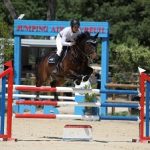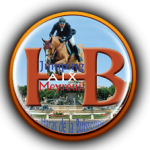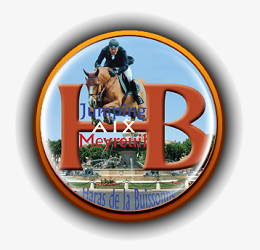At the intersection of quantum physics and information security lies a profound synergy between light, entropy, and geometry—elements that quietly shape the future of secure communication. Quantum cryptography leverages the fundamental laws of nature to create unbreakable codes, where even the smallest disturbance reveals eavesdropping attempts. This article explores how entropy, the Fibonacci sequence, the speed of light, and elegant geometric patterns converge to define secure quantum pathways—using the whimsical yet insightful metaphor of « Huff N’ More Puff » to illustrate delicate quantum balances.
The Entropy of Light and Information: Foundations of Quantum Cryptography
In quantum systems, entropy is the silent guardian of irreversibility. Governed by the second law of thermodynamics, entropy increases in closed systems, creating a directional arrow of time that marks irreversible processes. In quantum cryptography, this principle ensures the unclonability of quantum states—central to protocols like BB84. When an eavesdropper attempts to measure a photon’s quantum state, the act itself increases detectable entropy, instantly alerting authorized users to compromise. This irreversible disturbance is a cornerstone of quantum security: no perfect copy, no stealthy interception.
| Core Concept | Role in Quantum Cryptography |
|---|---|
| The Second Law of Thermodynamics | Defines irreversible information loss; enables detection of any unauthorized measurement |
| Entropy in Quantum States | Ensures quantum states cannot be cloned, forming the basis for provable security |
Patterns in Nature: Fibonacci, Golden Ratio, and Quantum State Design
Nature often favors mathematical harmony, and quantum systems reveal this through energy level spacing and photon behavior. The Fibonacci sequence converges to the golden ratio φ ≈ 1.618—a proportion observed not only in shells and flowers but also in quantum energy transitions. Photon emission and state transitions exhibit rhythmic patterns that closely align with this ratio, suggesting nature encodes information using geometric optimality. The golden ratio’s prevalence hints at a deeper principle: efficient, stable encoding shaped by physical laws.
- Fibonacci sequence: 1, 1, 2, 3, 5, 8, 13, … converges to φ (~1.618)
- Golden ratio appears in photon emission spectra and quantum state spacing
- This coordination supports robust, low-error information transfer in quantum channels
The Speed of Light as a Geometric Constraint in Quantum Communication
Since 1983, the speed of light—exactly 299,792,458 meters per second—acts as a fundamental limit across quantum networks. This invariant speed governs the distribution of entangled photons, the latency of quantum key distribution (QKD), and the timing of secure transmissions. Because no signal can exceed c, quantum communication protocols strictly enforce causality: delays are predictable, and latencies define operational bounds. This relativistic constraint ensures that cryptographic keys remain secure from tampering within the framework of physics itself.
| Constraint | Impact on Quantum Cryptography |
|---|---|
| Speed of light (299,792,458 m/s) | Defines maximum key transmission speed and entanglement distribution delay |
| Causality Preservation | Prevents faster-than-light signaling, securing protocol integrity |
Huff N’ More Puff: A Modern Illustration of Quantum-Geometric Principles
Though whimsical, “Huff N’ More Puff” embodies the fragility and balance of quantum states. Imagine a puff of air rising—its path shaped by invisible forces, easily disrupted by even a slight breeze. Similarly, a quantum wavefunction remains coherent until measured, when observation collapses its state irreversibly. This delicate transition mirrors the puff’s trajectory, where measurement alters the outcome, underscoring how observation itself defines security in quantum cryptography. Just as small perturbations disrupt the puff’s smooth arc, environmental noise disrupts quantum coherence—highlighting both vulnerability and the need for precise control.
- Puff trajectory = wavefunction collapse under measurement; small disturbances break coherence
- Observation alters quantum path—core to cryptographic unpredictability
- Geometry of stability ensures only intentional measurement reveals truth
From Entropy to Entanglement: Building Secure Paths with Light
Quantum cryptography balances entropy and entanglement to forge secure communication channels. The arrow of time, driven by increasing entropy, demands timely transmission before decoherence corrupts fragile quantum states. This urgency shapes quantum key distribution (QKD), where protocols must operate within strict time windows defined by physical limits. Complementing this, geometric symmetries—such as golden ratios in photon polarization—enhance error detection and resilience. These hidden paths, encoded in light’s geometry, form the backbone of modern secure networks.
As research advances, the marriage of entropy, geometry, and quantum physics continues to inspire innovative cryptographic designs. Understanding these principles empowers not only scientists but also designers of secure systems, who must navigate the invisible forces shaping information’s fate. From the imperceptible rise of a puff to the precise dance of entangled photons, nature’s hidden patterns illuminate a path forward—one where light, order, and uncertainty converge to protect the future of privacy.
Explore how Huff N’ More Puff brings quantum-geometric principles to life
| Key Takeaways | Description |
|---|---|
| Entropy ensures unclonability and detects eavesdropping | |
| Fibonacci and golden ratio optimize quantum state encoding | |
| Speed of light defines latency and relativistic security bounds | |
| Geometric symmetry enhances error resilience in quantum keys |















